JIMMY WOOD builds another superb static model
Background
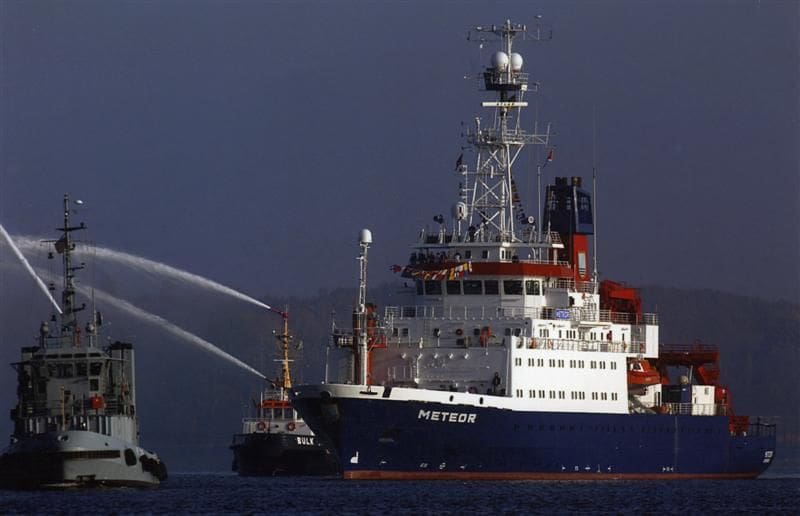
Built by Schlichting Shipyard at Travemunde and launched in 1986, RV Meteor, Photo 1, has been contributing to German ocean research since that date. She is described as a multi-purpose research vessel for living and non-living resources, and is capable of world-wide operation. She is owned by the German Federal Republic, however scientific voyage planning is the responsibility of the German Research Council’s Senate Committee for Oceanography and the running of the vessel is entrusted to the Meteor Head Office at the University of Hamburg. She is one of the world’s best research platforms and is managed by a private shipping company, Reederei F. Laeisz based in Hamburg. She is at the disposal of all marine research disciplines working in ice-free seas.
Enjoy more Model Boats Magazine reading in the monthly magazine.
Click here to subscribe & save.
Meteor is 97.5 metres long, 16.5 metres beam with a displacement of 4780 tons and is powered by twin diesel-electric motors in tandem. Her normal crew consists of 33 personnel and she can accommodate up to 30 scientists using the laboratories and large number of items of scientific equipment embarked.
The model and research
During the last few months of building Polar Star (MB, Sept 2006) I had been on the look-out for a suitable subject as a ‘follow-on’ subject when a good friend of mine in The Ship Modelling Society presented me (tongue in cheek) with a Revell plastic kit. I say tongue in cheek because he knows perfectly well that I am not into kits, but he has a very good idea of the type of vessel I like to build.
The kit was RV Meteor to a scale of 1:300 and the box bore a good enough illustration of the finished model to make me think that this a ship right up my street, but of course not in plastic! Anyway, many thanks to my good friend Cliff who pointed me in the right direction.
I thought that my next port of call might now be the University of Hamburg. So, I introduced myself in the normal way (a letter, not email) and explained that I was interested in scratch building a model of Meteor and could they provide me with all the necessary drawings and let me know if there was any possibility of getting on board Meteor to take photographs. By return, I received a complete set of plans at 1:100, which is the scale to which I normally build.
I was also told that the ship was very unlikely to visit a port in the UK in the foreseeable future. As this ruled out my photographic exercise my next question was: Could I please be introduced to a member of the crew who would be willing to take photographs for me? And so, I was asked to write to Captain Niels Jakobi on Meteor. To cut a long story short, over the three years I have been researching and building the model, Niels has been the most wonderful, helpful friend anyone could ask for. He has provided me with over 500 photographs and answered, always in near perfect English, the many questions that I have asked. He has seen all the photographs of the finished model, given me his seal of approval and yes, he too is a model ship builder.
Building the model
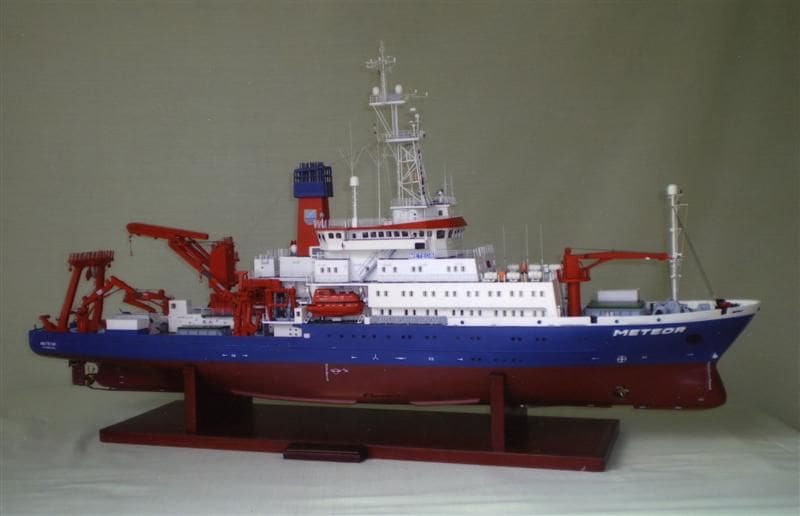
The model, Photo 2, is scratch built to a scale of 1:100 from the original drawings with most of the detail based on the photographs I received. The hull is ‘plank on frame’ on 1/4 inch marine ply frames with lime planking (1.5mm x 5mm). The superstructure is of 1mm ply on 1/8 inch ply frames.
The fixtures, fittings and most of the detail parts are made from wood and brass. The only significant exceptions to scratch building are the 300 or so five rail stanchions (designed and photo-etched for me by Gordon Brooks to accommodate the 0.4mm steel piano wire I use for the rails) and the propeller which was manufactured by George Sitek.
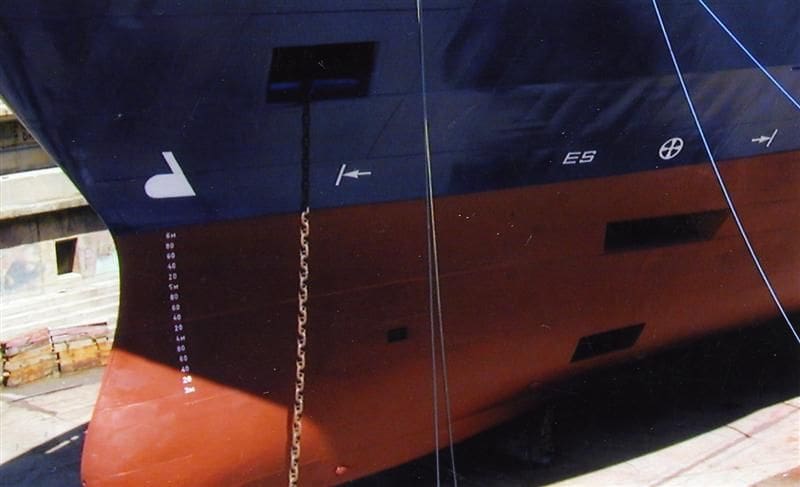
Coinciding with the final stages of building the hull, I was informed that Meteor was to have a major refit early in 2006 at Talcahuano, a shipyard about 250 miles south of Valparaiso in Chile, involving amongst other things the removal of the existing bow thruster and the section of hull adjacent to it, Photo 3, followed by the fitting of an entirely different type of thruster, Photos 4 and 5.
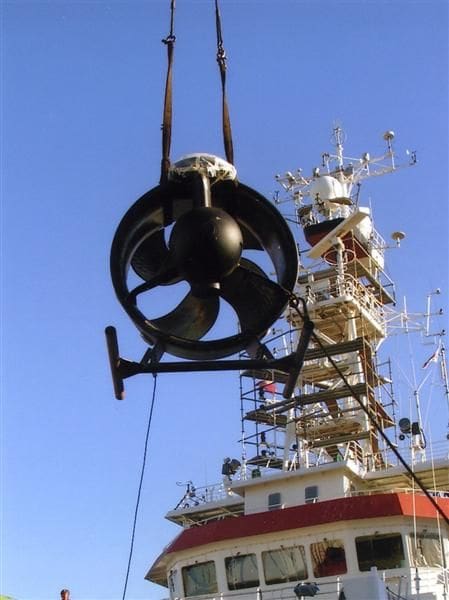
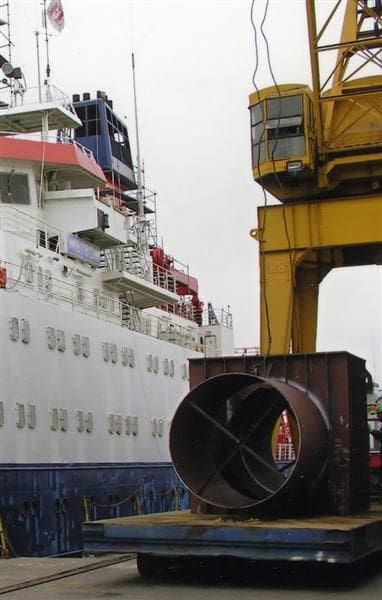
Fortunately, the details and dimensions of the new thruster were made available to me just in time to let me do my own refit on the model without having to start all over again.
Photos 6 and 7 show the new thruster in its normal position for steaming and in its lowered position when it can rotate on its vertical axis through 360 degrees, which is very useful for dynamic positioning.
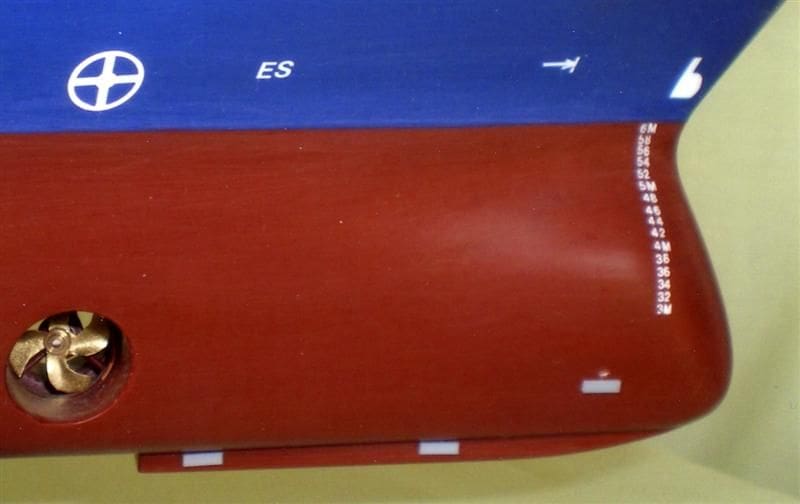
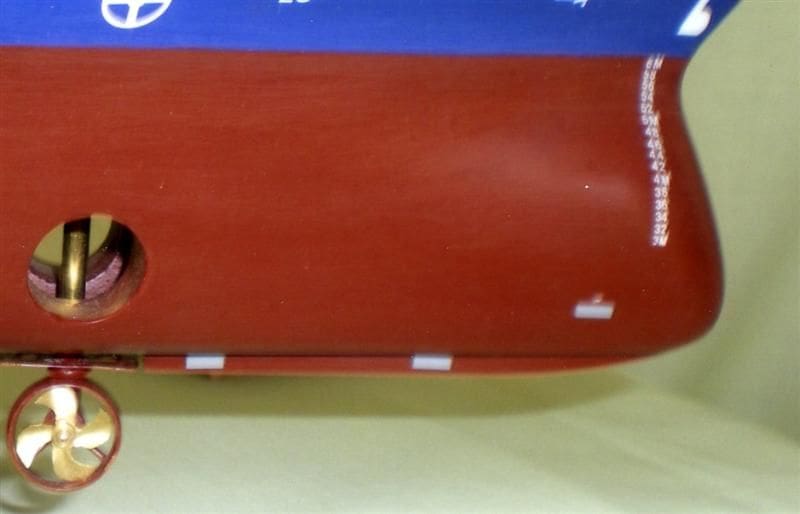
Unusual features
One or two of the more unusual features encountered during the building are perhaps worth a mention. The first of those is the fact that Meteor has an asymmetric stern. Have you heard of these? Well no, I hadn’t either, nor have I met anyone who has. However, It is clearly shown on the bodyplan as received but it can be reproduced here in Figure One. I have shaded the shape of the lower part of Ordinate One. This clearly illustrates how asymmetric the hull is at the stern. I don’t know if the shipbuilders had any problems with this, but I certainly found that planking the hull in this area was not easy.
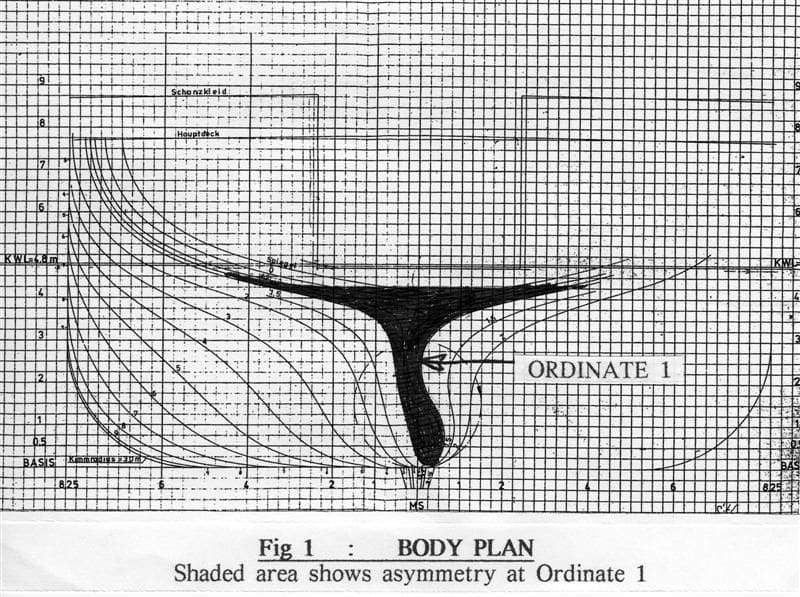
Another feature that I had some difficulty understanding, was the fact that two of the decks in the superstructure were split level. From the drawings alone it was not easy to follow from a construction point of view, but with the aid of photographs I eventually worked out the interior layout which in turn led me to understand the external appearance. Photos 8 and 9 give a good idea of these and in the latter is below view of the starboard crane.
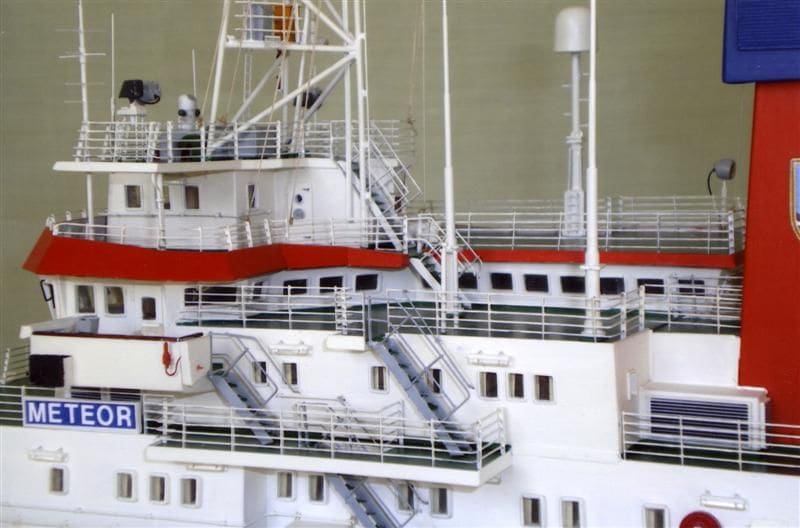
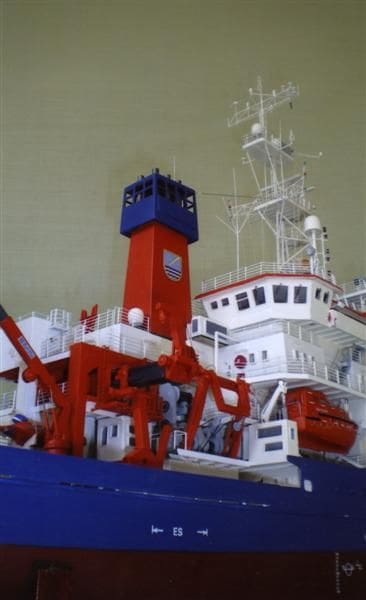
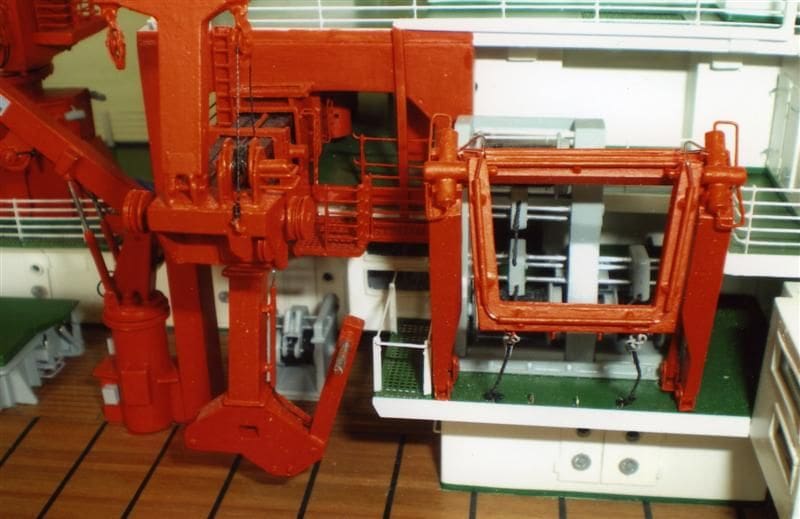
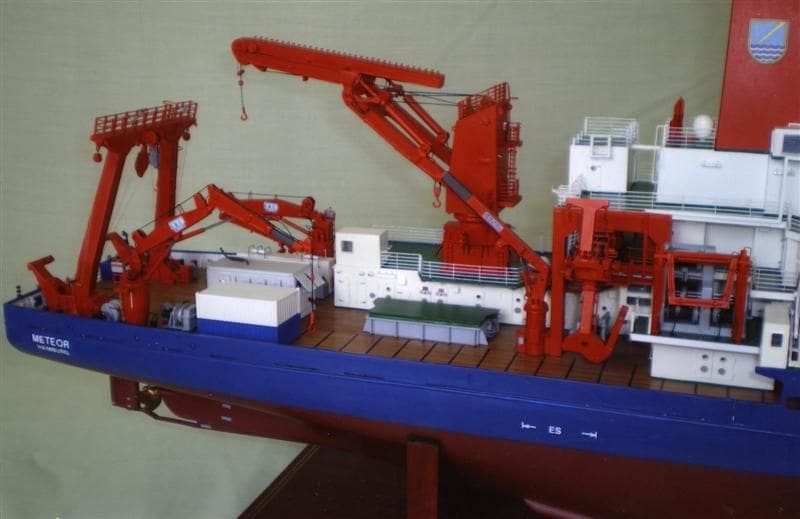
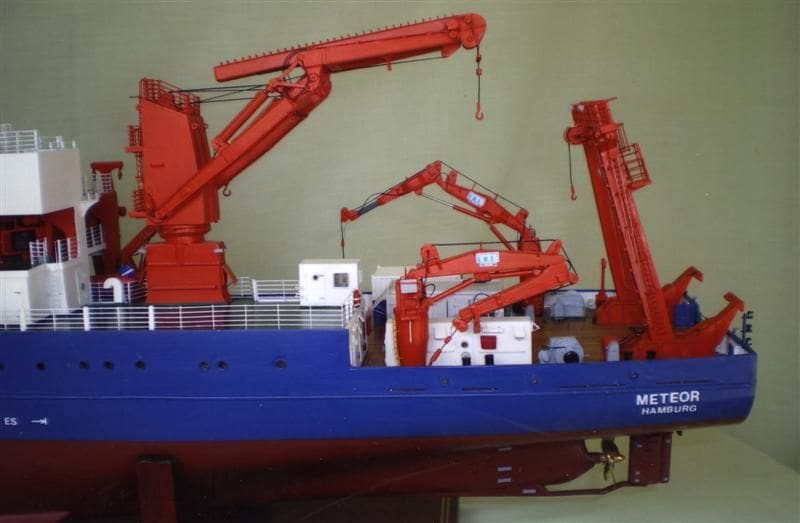
The variety of cranes mounted is also very interesting. Those seen aft of the starboard lifeboat in Photos 10 and 11 are in fact designed to handle some of the scientific equipment and are unique, as is the very large crane aft, Photo 12. Fortunately, I received drawings for all of these cranes so was able to build them accurately and reasonably detailed. Readers who know me are well aware of my attachment to cranes!
A few of the pieces of scientific equipment available on board have been modelled and are shown on the main deck aft, Photo 13. Below the jib of the starboard crane is a very sophisticated ROV (Remotely Operated Vehicle): At the base of the port leg of the A Frame is an AUV (Autonomous Underwater Vehicle), the newest development in underwater research and alongside the AUV is a Streamer, about 500m long that is equipped with hydrophones and is used for seismic research.
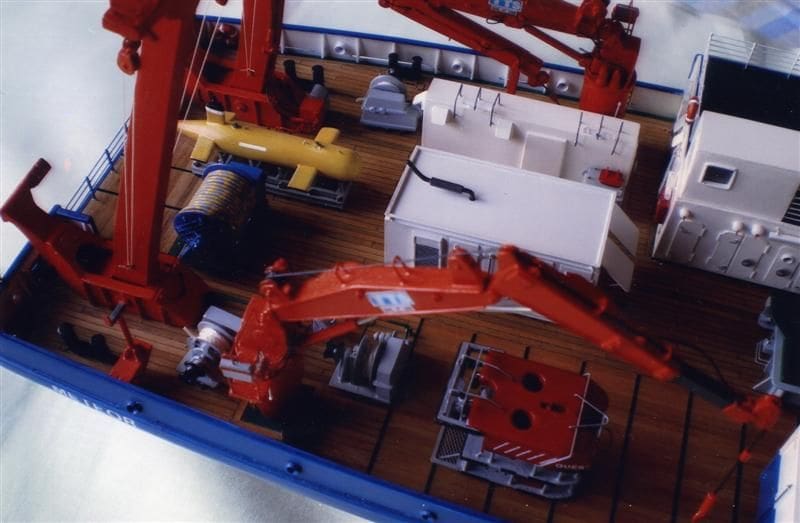
The mast, Photo 14, was a nice little exercise in silver and soft soldering.
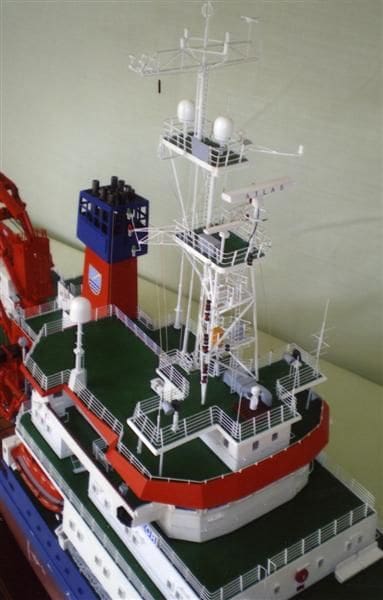
Photo 15 is of the wheelhouse with laboratories on its roof.
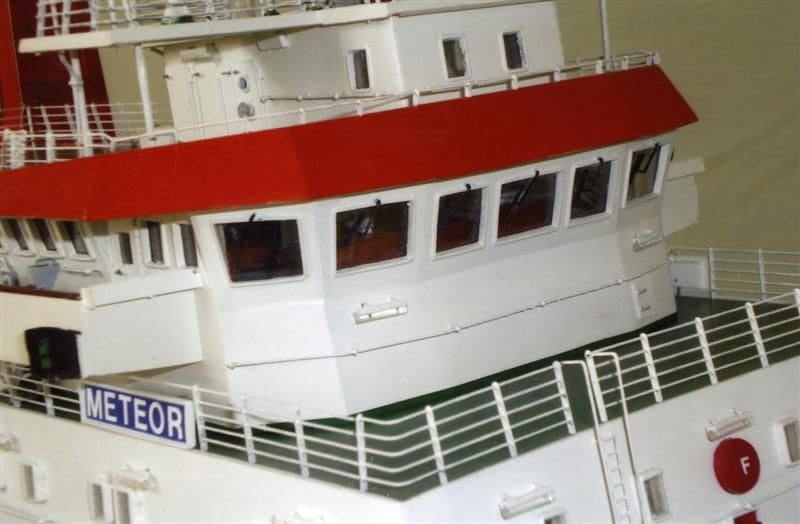
Photo 16 is a close-up of the forecastle deck and the funnel in Photo 17 is certainly unusual.
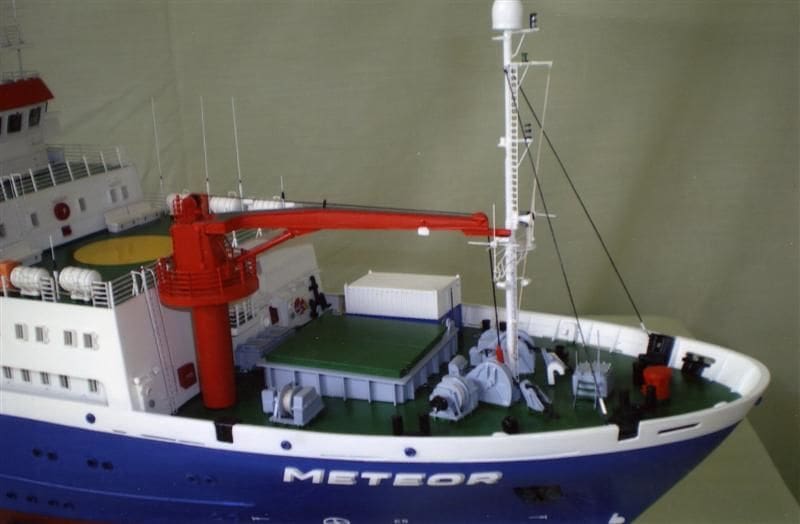
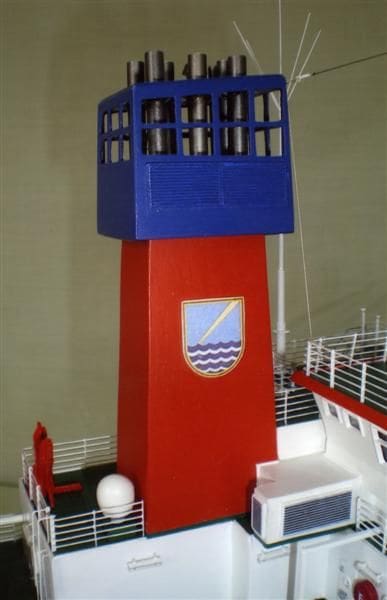
The starboard lifeboat in Photo 18 is a miniature model in its own right and Photo 19 is of the stern mounted A Frame with the main deck still awaiting some of the detail parts.
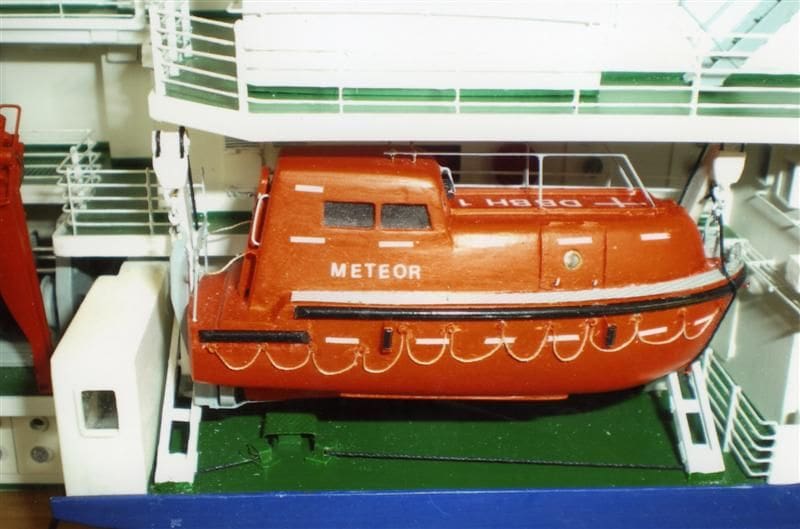
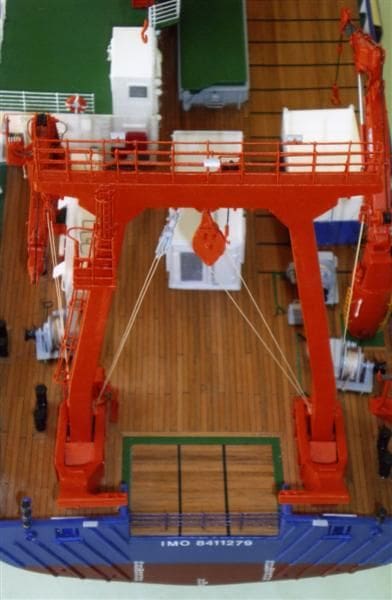
Photo 20 is a view from underneath the stern showing the propeller and rudder arrangements.
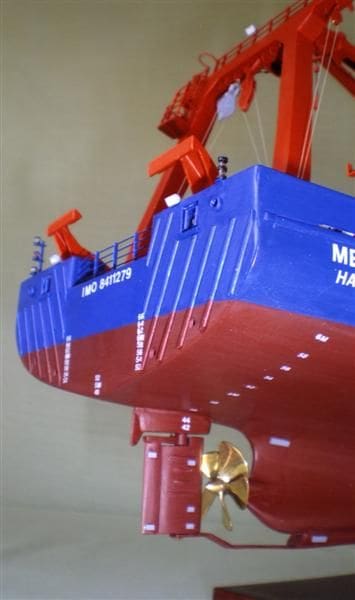
This brief résumé of three years effort is not intended to completely describe how to build Meteor, because that would be a very long story. However, researching and building Meteor has been a very interesting, enjoyable and a frequently challenging exercise, producing an end product that has been made possible in no small measure by the information received, initially from Hamburg and then over a three year period from my good friend, Captain Niels Jakobi. To these very good gentlemen and to my friend Cliff Johnson, for his initial introduction to Meteor, a big THANK YOU.



